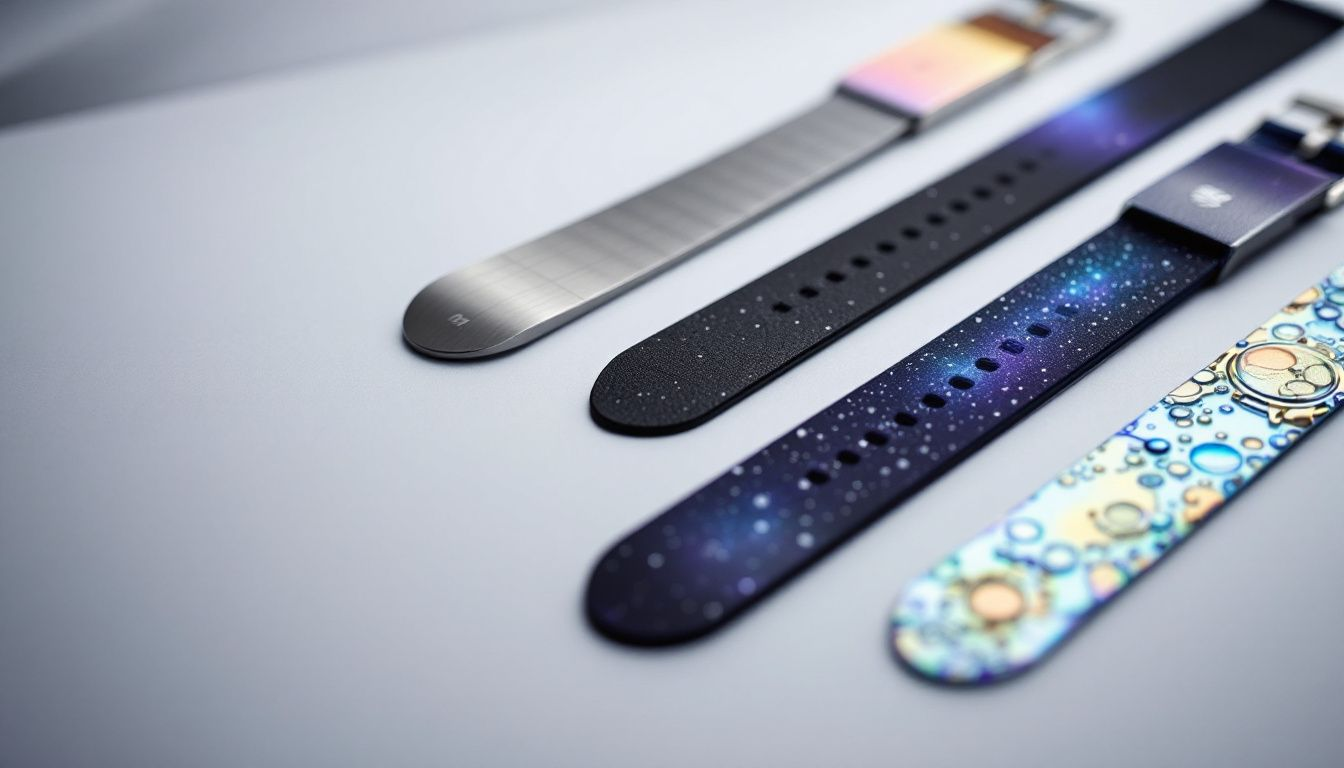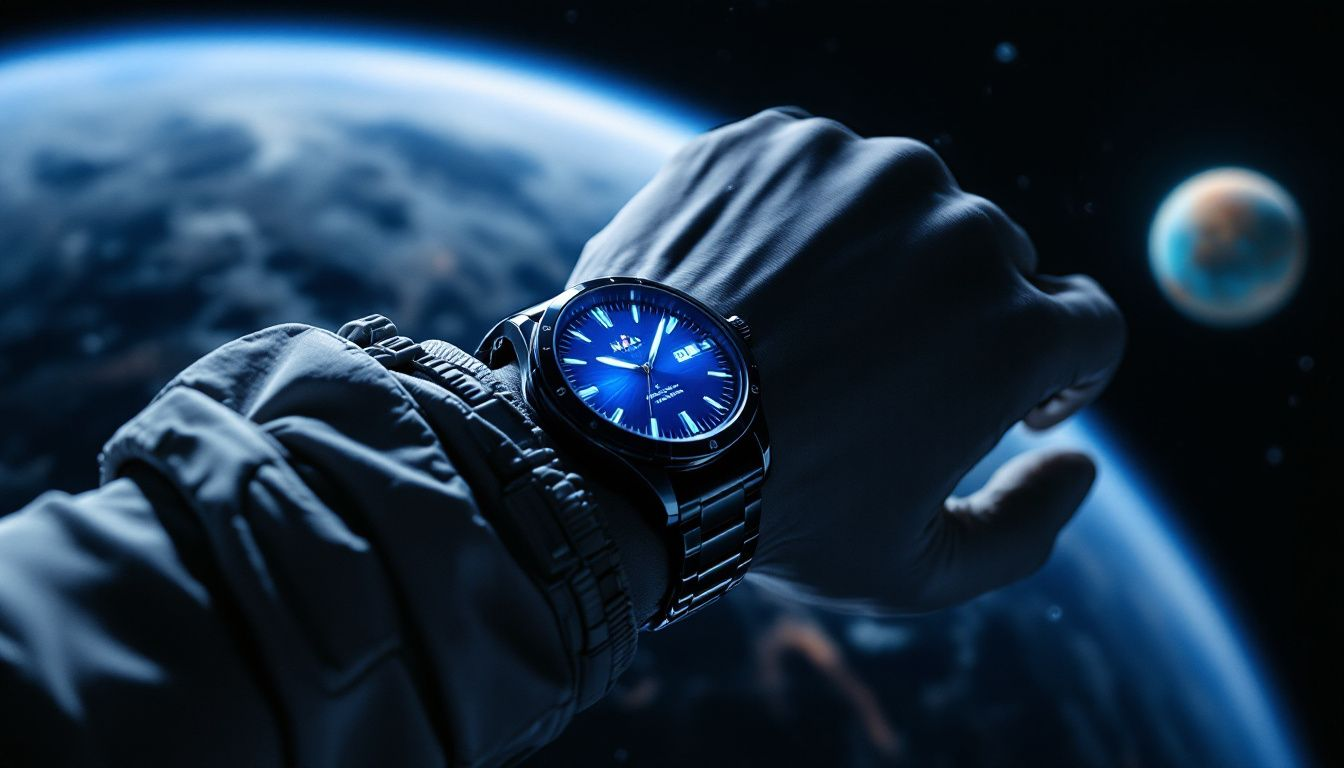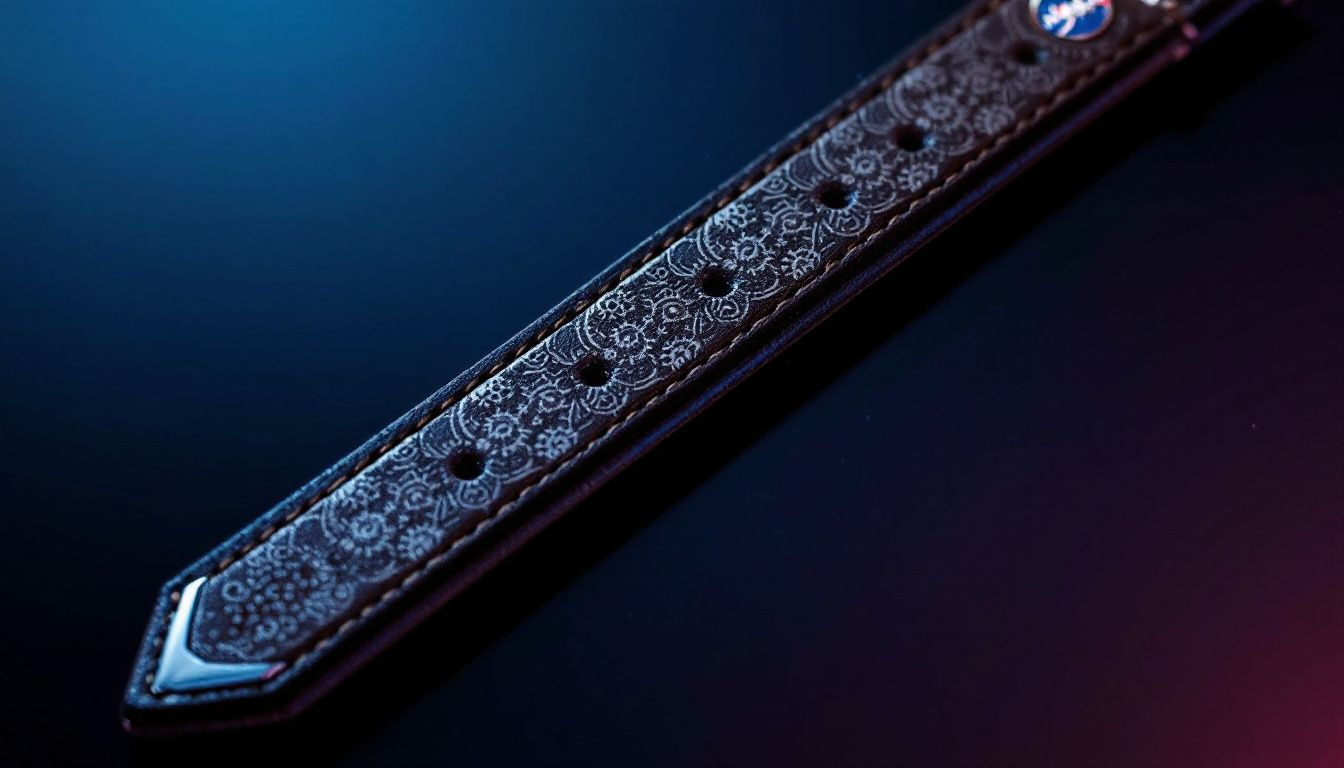Top NASA Watch Straps: Durable Velcro Bands for Space Enthusiasts
Interested in NASA watch straps? These durable and historic straps are known for their use in space missions and unique design. Learn about their history, materials, and why they stand out.
Key Takeaways
-
NASA watch straps hold historical significance, originating from the Apollo missions and symbolizing advancements in space exploration.
-
The straps are crafted from high-quality materials like canvas, suede, and leather, ensuring durability and comfort for extreme conditions.
-
Authenticity and meticulous craftsmanship are essential, with each strap undergoing extensive testing to meet NASA’s high standards for space missions.
The Legacy of NASA Watch Straps

The legacy of NASA watch straps is deeply intertwined with the history of space exploration itself. These straps gained iconic status during the Apollo missions, particularly the Apollo 11 mission, where the Omega Speedmaster—affectionately known as the ‘Moonwatch’—was worn by astronauts as they made their historic first steps on the lunar surface. The black straps worn over space suits became symbolic of this monumental achievement, representing both the technological advancements of the time and the human spirit of exploration.
Beyond their practical use, NASA watch straps have left an indelible mark on watch design and culture. Their association with the space program has made them highly coveted among watches enthusiasts and collectors.
These straps symbolize not just a piece of history but also the enduring influence of space exploration on modern technology and design. From the Apollo missions to contemporary space endeavors, NASA watch straps continue to inspire and captivate, serving as a reminder of the extraordinary feats achieved by astronauts.
Design and Materials of NASA Straps

When it comes to the design and materials of NASA straps, every detail is meticulously considered to ensure durability and comfort. These straps are crafted from high-quality materials, including canvas, suede, and leather, each chosen for their specific properties and ability to withstand the harsh conditions of space. The use of top-grade Velcro further enhances their reliability, providing a secure and adjustable fit that is crucial for astronauts.
The materials used in NASA straps are selected not only for their strength but also for their comfort. Whether it’s the robust durability of canvas, the unique texture of suede, or the classic appeal of leather, each material offers distinct benefits. The choice of material can influence both the functionality and aesthetic appeal of the strap, making it essential to understand the characteristics of each option.
Canvas and Suede Options
Canvas straps are a popular choice for NASA watch bands due to their exceptional durability and lightweight nature, making them ideal for the demanding conditions of space. These straps provide a comfortable fit without adding unnecessary weight, which is crucial for astronauts who need to minimize their gear’s bulk. The resilience of canvas ensures that the straps can endure the wear and tear of both space missions and everyday use.
On the other hand, suede offers a different set of advantages. Known for its aesthetic appeal and soft texture, suede straps add a touch of style to NASA watch bands. The natural breathability of suede enhances comfort, particularly during extended wear, making it a favored choice for those looking to combine functionality with a sophisticated look.
Leather Variants
Leather NASA watch straps are the epitome of durability and elegance. These straps blend robustness with a classic aesthetic, appealing to both practical users and style-conscious individuals. Leather’s inherent strength ensures that the straps can withstand the rigors of space missions while maintaining their sophisticated appearance.
The timeless appeal of leather makes it a versatile choice for various occasions. Whether in black or olive, leather straps offer a blend of durability and style that is hard to match. This combination of practicality and elegance has made leather straps a beloved option among watch enthusiasts who value both form and function.
Top-Grade Velcro for Safety
Safety is paramount in space exploration, and NASA’s reliance on top-grade Velcro for their watch straps is a testament to its reliability. The Velcro straps used by NASA are made from high-quality nylon and Velcro, ensuring a strong and secure fastening system. This is crucial in the extreme conditions of space, where equipment must remain securely attached at all times.
The original NASA Velcro straps were olive green, but they have evolved over time to meet the changing needs of space missions. The loop fastening system provided by Velcro allows for easy adjustments, even when astronauts are wearing bulky gloves, ensuring that the straps remain adaptable and secure in any situation.
Functionality and Comfort

Functionality and comfort are at the heart of NASA watch straps. These straps are designed to endure the extreme conditions of space while providing maximum comfort to the wearer. Materials such as ballistic nylon, canvas, and suede are chosen for their durability and resistance to wear, ensuring that the straps can withstand the rigors of space missions and daily use.
The design of NASA straps prioritizes comfort, even under the harshest conditions. They are engineered to minimize irritation and discomfort, allowing astronauts to focus on their missions without distraction. Whether worn during a spacewalk or a day at the office, NASA straps offer a blend of strength, comfort, and reliability that is unmatched.
Loop Fastening System
The loop fastening system is a key feature of NASA’s velcro straps, providing ease of use and secure attachment. Velcro was extensively used in the Apollo missions to secure various equipment, including wristwatches and elements of the space suit. This system allows for quick adjustments and reliable fastening, crucial for astronauts who need to make changes swiftly and efficiently.
American Velcro, known for its durability, is the material of choice for these straps. The combination of a loop and hook system ensures that the strap remains securely in place, even under the demanding conditions of space exploration. This technology has proven its worth time and again, making it an indispensable component of NASA watch straps.
Fit and Wrist Sizes
Finding the right fit is essential for the comfort and functionality of any watch strap. NASA straps are available in a range of sizes, from 18mm to 24mm, to accommodate various wrist sizes and watch designs. This variety ensures that there is a perfect fit for everyone, whether you’re wearing the strap over a space suit or on a bare wrist.
To ensure a proper fit, it’s important to measure both your wrist circumference and the lug width of your watch. NASA straps cater to wrist sizes ranging from 140mm to 219mm, with options for custom sizing available. This attention to detail ensures that the straps provide a secure and comfortable fit for all users.
Comfort in Extreme Conditions
NASA watch straps are designed to provide exceptional comfort, even in the extreme conditions encountered in space. The high-quality Velcro used in these straps ensures a strong and secure closure, vital for maintaining a secure fit during space missions. This premium-grade Velcro is built to withstand the harshest environments, from the vacuum of space to the intense heat of re-entry.
The design and materials of NASA straps make them suitable for a wide range of activities, from military missions to adventurous outdoor pursuits. Whether you’re exploring the depths of space or the great outdoors, these straps offer the durability and comfort needed to ensure a seamless experience.
Authenticity and Craftsmanship

Authentic craftsmanship and authenticity are the hallmarks of NASA watch straps. These straps undergo extensive trials under extreme conditions, including temperature extremes, humidity, and vibration tests, to ensure their quality and durability. The rigorous testing process underscores the high standards required for equipment used in manned space missions.
The OMEGA Speedmaster, officially certified by NASA for all manned space missions in March 1965, exemplifies the durability and reliability demanded by the space program. Each NASA strap is hand-stitched, showcasing meticulous craftsmanship and attention to detail.
The use of black PVD coating on hardware enhances corrosion resistance and longevity, further demonstrating the thoroughness in the strap’s design and production.
Popular Models and Variations
NASA watch straps come in a variety of models and colors, each with its own unique appeal. Popular colors include black and olive, reflecting the practical and aesthetic preferences of astronauts and watch enthusiasts alike. These colors are not only functional but also iconic, often associated with historic space missions.
Some strap designs are influenced by specific missions, such as Gemini and Skylab, adding an element of historical significance to their appeal. These variations allow users to choose a strap that resonates with their personal style and interests, while also paying homage to the storied history of space exploration.
How to Choose the Right NASA Strap

Choosing the right NASA strap involves considering several factors to ensure it meets your needs. The length of the strap should be suitable for both bare wrists and those wearing space suit sleeves, providing an optimal fit in any situation. Price can vary significantly based on the strap’s material, brand, and whether it is officially endorsed by NASA.
It’s important to consider the adjustability, durability, and temperature resistance of the strap to ensure it can withstand both space and everyday use. Quick-release spring bars can facilitate easy strap changes, enhancing user convenience and versatility.
By taking these factors into account, you can select a NASA strap that perfectly complements your watch and lifestyle.
Summary
In summary, NASA watch straps are more than just functional accessories—they are pieces of history, meticulously crafted to withstand the harshest conditions. From their role in historic space missions to their influence on modern watch design, these straps represent the pinnacle of durability, comfort, and craftsmanship. Whether you choose a canvas, suede, leather, or Velcro strap, you can be confident in the quality and reliability of your NASA strap.
As you explore the world of NASA watch straps, remember to consider the various factors that will ensure the best fit and performance for your needs. By choosing a strap that combines functionality with historical significance, you can carry a piece of space exploration legacy on your wrist. Embrace the spirit of adventure and innovation that these straps embody, and let them inspire your own journeys, whether on Earth or beyond.
Frequently Asked Questions
What materials are NASA watch straps made of?
NASA watch straps are crafted from high-quality materials such as canvas, suede, leather, and durable Velcro to ensure safety and comfort.
How do I choose the right size for my NASA strap?
To choose the right size for your NASA strap, measure your wrist circumference and the lug width of your watch. Ensure the strap size is compatible with your measurements, as they come in sizes ranging from 18mm to 24mm for wrist sizes between 140mm and 219mm.
Are NASA watch straps comfortable for daily wear?
NASA watch straps are indeed comfortable for daily wear, as they are designed to provide comfort in extreme conditions. Their functionality makes them a great choice for everyday use.
What makes the Velcro fastening system reliable?
The Velcro fastening system is reliable due to its high-quality nylon construction, which ensures a strong grip and allows for easy adjustments. This combination provides a secure attachment that is essential for various applications, including in space environments.
Can I find NASA watch straps in different colors and designs?
Yes, you can find NASA watch straps in various colors and designs, including black and olive, inspired by historic missions like Gemini and Skylab.




